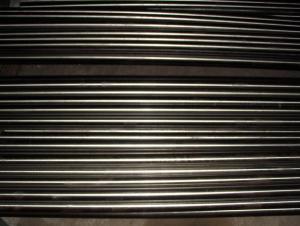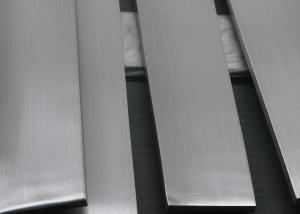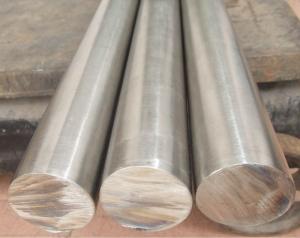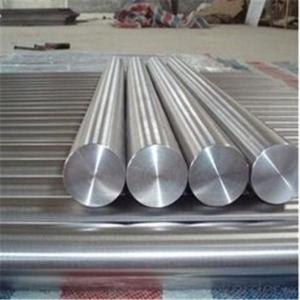Stainless Steel Bar Bright
- Loading Port:
- Tianjin Port
- Payment Terms:
- TT or LC
- Min Order Qty:
- 1 Ton m.t.
- Supply Capability:
- 1000 Tons Per Month m.t./month
OKorder Service Pledge
OKorder Financial Service
You Might Also Like
Introduction of Stainless Steel Bar Bright:
Stainless steel is a production which not easy rust,acid resistance and corrosion resistance, so it is widely used in light industry, heavy industry, daily necessities and the decoration industry.my company long-term supply stainless steel porducts including: stainless steel sheet, stainless steel coil and stainless steel tube.
Details of Stainless Steel Bar Bright(Cold Drawing Polished):
*DIA 10mm to 130mm
*FORGE
*DIA 130mm to 300mm
*GB1220,ASTM A 484/484M, EN 10060/ DIN 1013
*DIA 3mm to 60mm
Main operation | Main steel grade | Available size(mm) | Monthly capacity(mt) | Length(mm) | |
OEM | Stainless steel | 40~500 | 1500 | 4000~8000 | |
Hot | 303 303Cu 304/L 310S 316/L 321 416 420 | 12 ~200 | 3000 | 4000~7000 | |
17-4PH WLA510 | 19~110 | 2000 | 4000~7000 | ||
ST Bar | 321 304/L 316/L 310S 17-4PH WLA510 | 19~110 | 2000 | 4000~7000 | |
CD Bar | Round bar | 303 303CU 304/L 316/L 416 420 17-4PH WLA510 | 4.76~100 | 500 | 2500~6500 |
Square bar | 303 303CU 304/L 316/L 416 17-4PH WLA510 | 4.76~75 | 180 | 2500~6500 | |
Hex bar | 303 303CU 304/L 316/L 416 17-4PH WLA510 | 4.76~75 | 180 | 2500~6500 | |
CG Bar | 303 303CU 304/L 316/L 416 420 17-4PH WLA510 | 4.76~100 | 500 | 2500~6500 | |
Features of Stainless Steel Bar Bright:
*Low density
*High specific strength
*High corrosion resistance
*Good thermal stability and plasticity
*It is widely applied for petroleum, chemical, mechanical and electrical, hardware, etc.
Quality assurance of Stainless Steel Bar Bright:
All of the products are detected by ultrasound making sure that no defects inside the products. Besides, chemical composition, mechanical properties and high-powered organization are also strictly controlled, ensuring our clients get the best products.


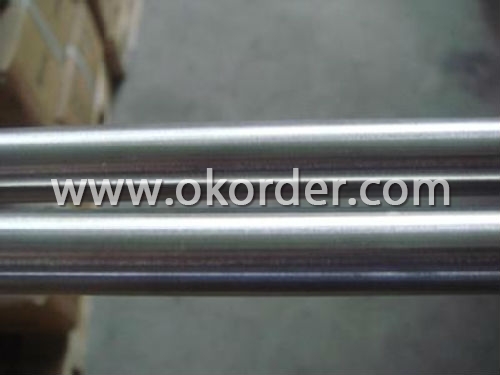

- Q: Are stainless steel bars corrosion-resistant?
- Stainless steel bars possess corrosion-resistant qualities. They belong to a steel alloy category comprising a minimum of 10.5% chromium. This proportion creates a thin, protective layer called a passive film on the metal's surface. The passive film acts as a barrier, shielding the steel from exposure to oxygen, moisture, and other corrosive elements. Consequently, the steel remains protected against corrosion. Furthermore, stainless steel bars may contain additional elements like nickel and molybdenum, which further enhance their ability to resist corrosion. Due to these properties, stainless steel bars find extensive usage in industries that require corrosion resistance, such as manufacturing, construction, and marine applications.
- Q: Are stainless steel bars suitable for the production of gears?
- Yes, stainless steel bars are suitable for the production of gears. Stainless steel offers high strength, durability, and resistance to corrosion, making it an ideal material for gears that need to withstand heavy loads and harsh environments. Additionally, stainless steel has excellent dimensional stability and can be easily machined into complex gear shapes, ensuring precise and reliable performance.
- Q: What are the different surface coatings available for stainless steel bars?
- There are several different surface coatings available for stainless steel bars, each with its own unique properties and benefits. Some of the most common surface coatings for stainless steel bars include: 1. Passivation: This process involves treating the surface of the stainless steel with an acid solution to remove any iron contaminants and promote the formation of a passive oxide layer. Passivation helps to enhance the corrosion resistance of stainless steel bars. 2. Electropolishing: This electrochemical process removes a thin layer of material from the stainless steel surface, resulting in a smooth and shiny finish. Electropolishing not only improves the aesthetics of stainless steel bars but also helps to reduce the risk of corrosion by eliminating surface imperfections. 3. Powder coating: This coating involves applying a dry powder to the stainless steel bars and then curing it with heat to create a protective layer. Powder coating provides excellent resistance to corrosion, chemicals, and UV radiation, making it suitable for outdoor applications. 4. PVD coating: Physical Vapor Deposition (PVD) is a vacuum deposition process that produces a thin film of coating on the stainless steel surface. PVD coatings can provide various properties such as enhanced hardness, wear resistance, and improved aesthetics. 5. Paint coating: Stainless steel bars can also be coated with paint, which not only adds color but also provides a layer of protection against corrosion. Paint coatings are available in a wide range of colors and can be customized to meet specific requirements. 6. Anodizing: Although primarily used for aluminum, anodizing can also be applied to stainless steel bars. This process creates an oxidized layer on the surface of the stainless steel, which enhances corrosion resistance and can provide decorative finishes in various colors. 7. Ceramic coating: Ceramic coatings offer high-temperature resistance, excellent hardness, and low friction properties. These coatings can protect stainless steel bars from wear, corrosion, and chemical damage, making them suitable for applications in harsh environments. It is important to consider the specific requirements of the application and consult with experts to determine the most suitable surface coating for stainless steel bars.
- Q: Can stainless steel bars be used in hygienic applications?
- Hygienic applications can indeed employ stainless steel bars. Stainless steel, renowned for its resistance to corrosion and durability, proves to be an ideal material in environments where cleanliness and hygiene hold utmost importance. Industries like food and beverage, pharmaceutical, and healthcare widely adopt stainless steel due to their stringent adherence to sanitary guidelines. Not only are stainless steel bars effortless to clean and maintain, but they also exhibit resistance against bacterial growth and can endure high temperatures and harsh cleaning agents. Moreover, stainless steel's nonporous nature prevents the absorption of liquids and contaminants, rendering it safe for use in contact with food and other delicate products. With excellent hygiene properties and compliance with rigorous industry standards, stainless steel bars confidently emerge as a suitable choice for hygienic applications.
- Q: Can stainless steel bars be used in the water treatment industry?
- Yes, stainless steel bars can be used in the water treatment industry. Stainless steel bars are highly resistant to corrosion, making them ideal for use in environments with high moisture and chemical exposure, such as water treatment plants. They can be used in various applications within the industry, including constructing and reinforcing structures, designing filtration systems, and manufacturing equipment. Stainless steel bars offer durability, strength, and long-term performance in harsh conditions, making them a reliable choice for the water treatment industry. Additionally, stainless steel is hygienic and easy to clean, ensuring that water quality is maintained.
- Q: What is the typical diameter range of stainless steel round bars?
- The diameter of stainless steel round bars can vary depending on the specific application and industry requirements. Typically, stainless steel round bars are available in a wide range of diameters. Diameter sizes for stainless steel round bars can vary from as small as 1/8 inch (3.175 mm) to as large as 20 inches (508 mm) or more. The specific diameter range will be determined by factors such as the grade of stainless steel, the manufacturing process, and the intended use of the round bar. To determine the required diameter range for a specific application, it is crucial to consult relevant industry standards, specifications, or suppliers.
- Q: Can stainless steel bars be used in the pulp and paper repair industry?
- Yes, stainless steel bars can be used in the pulp and paper repair industry. Stainless steel is known for its corrosion resistance, durability, and strength, making it suitable for various industrial applications. In the pulp and paper repair industry, stainless steel bars can be used for repairing and reinforcing equipment such as rollers, shafts, and other components that are exposed to harsh chemicals and high temperatures. Stainless steel bars provide excellent resistance to corrosion and erosion, ensuring the longevity and reliability of the repaired equipment. Additionally, stainless steel is easy to clean and maintain, which is crucial in industries where cleanliness and hygiene are important factors. Overall, stainless steel bars are a preferred choice for the pulp and paper repair industry due to their exceptional properties and performance in demanding environments.
- Q: Are stainless steel bars suitable for machining?
- Yes, stainless steel bars are suitable for machining. Stainless steel is known for its excellent machinability properties, making it a preferred material for various machining operations. It offers good cutting performance, allowing for efficient removal of material during the machining process. Stainless steel bars are also available in different grades and finishes, which can further enhance their machinability. Additionally, stainless steel has high thermal conductivity, which helps in dissipating heat generated during machining, reducing the risk of tool wear or damage. Overall, stainless steel bars are a reliable choice for machining applications.
- Q: Can stainless steel bars be used in the manufacturing of pumps and valves?
- Yes, stainless steel bars can be used in the manufacturing of pumps and valves. Stainless steel is a popular choice for these applications due to its high corrosion resistance, durability, and ability to withstand high-pressure environments. It also offers excellent strength and heat resistance, making it suitable for various pumping and valve operations in different industries.
- Q: Are stainless steel bars suitable for the production of fasteners?
- Stainless steel bars make an excellent choice for producing fasteners. This material is highly durable and resistant to corrosion, making it widely used across industries such as automotive, construction, and manufacturing. Due to its high strength and corrosion resistance, stainless steel is the perfect option for fasteners that must endure intense tension and exposure to various environmental conditions. By resisting rust and corrosion, stainless steel fasteners deliver exceptional performance and reliability over a long period of time. Moreover, stainless steel bars can be easily machined and molded into different shapes and sizes, allowing for the production of a diverse range of fasteners that meet specific requirements. In conclusion, stainless steel bars are a popular and appropriate option when it comes to manufacturing fasteners because of their strength, corrosion resistance, and versatility.
Send your message to us
Stainless Steel Bar Bright
- Loading Port:
- Tianjin Port
- Payment Terms:
- TT or LC
- Min Order Qty:
- 1 Ton m.t.
- Supply Capability:
- 1000 Tons Per Month m.t./month
OKorder Service Pledge
OKorder Financial Service
Similar products
Hot products
Hot Searches
Related keywords











